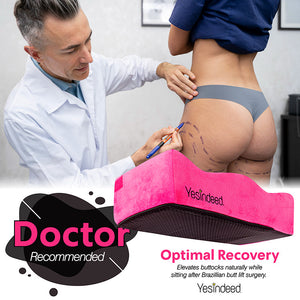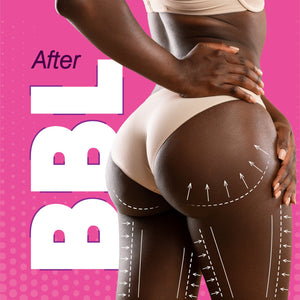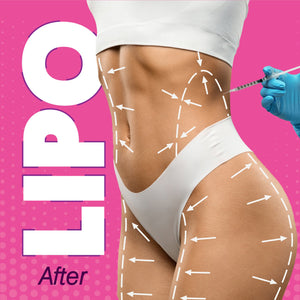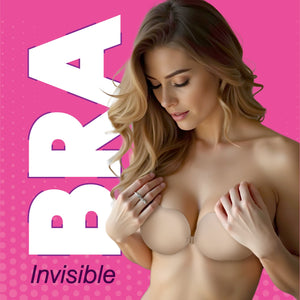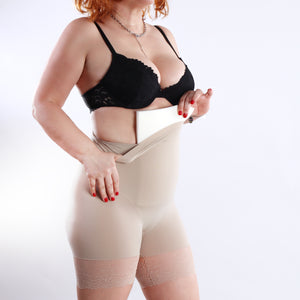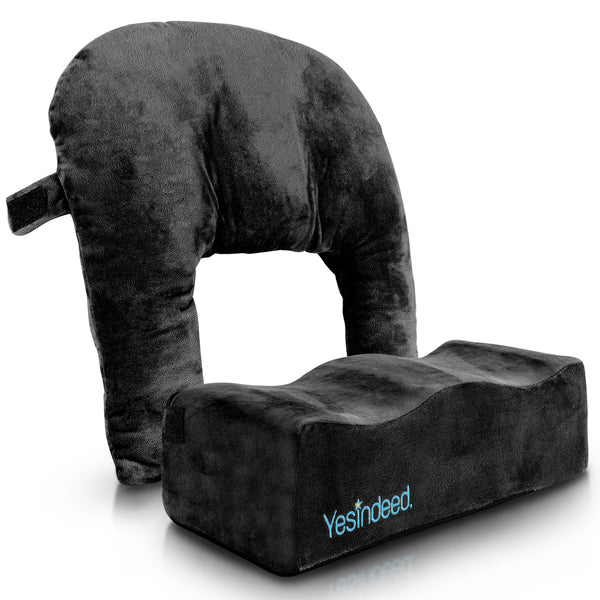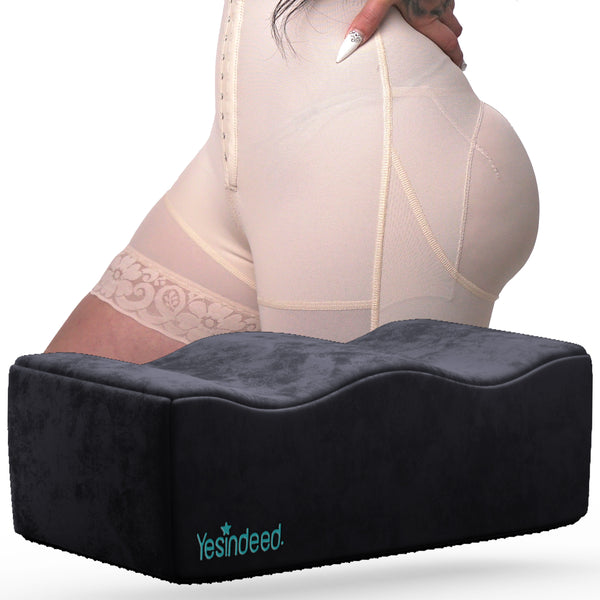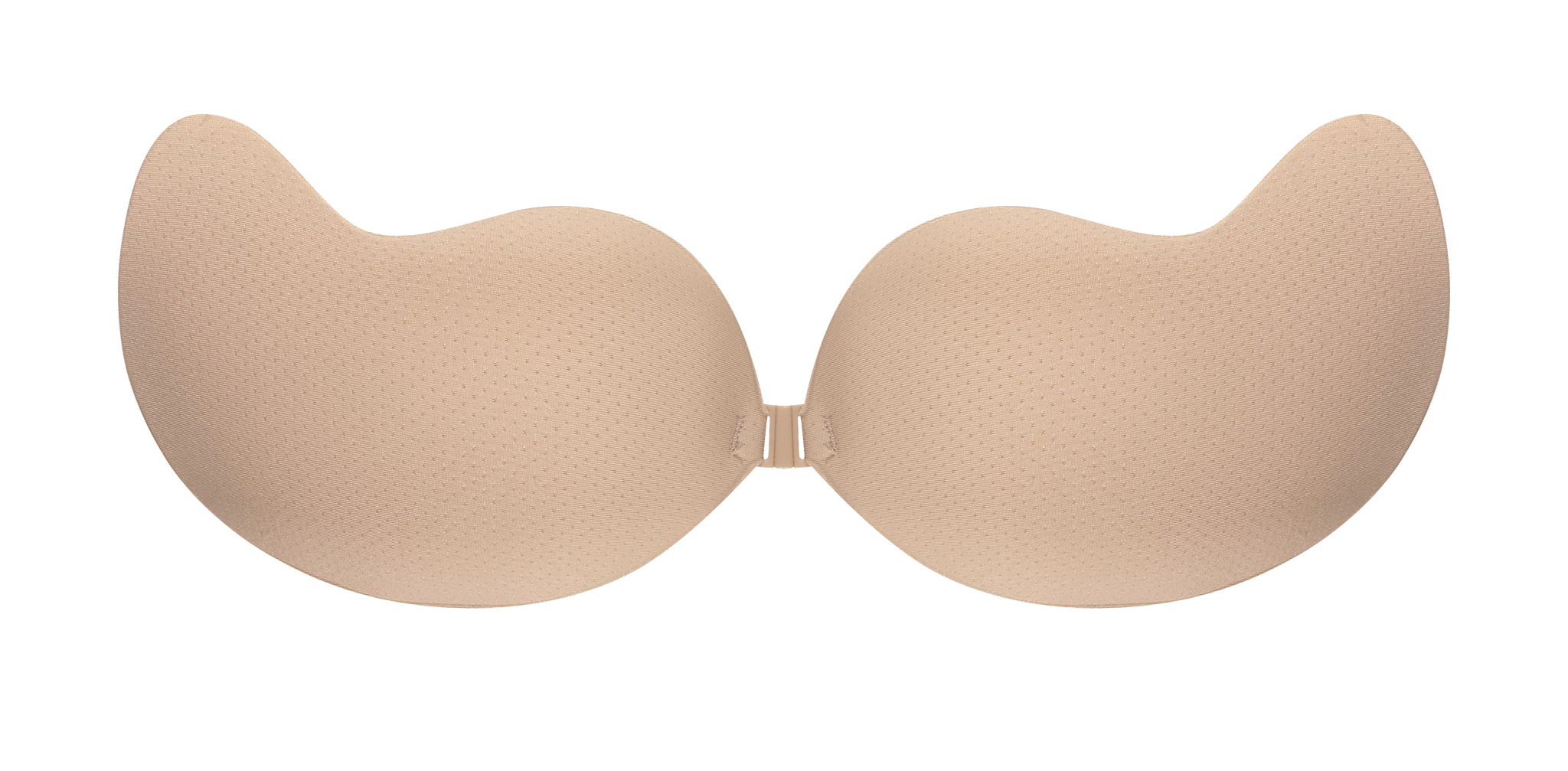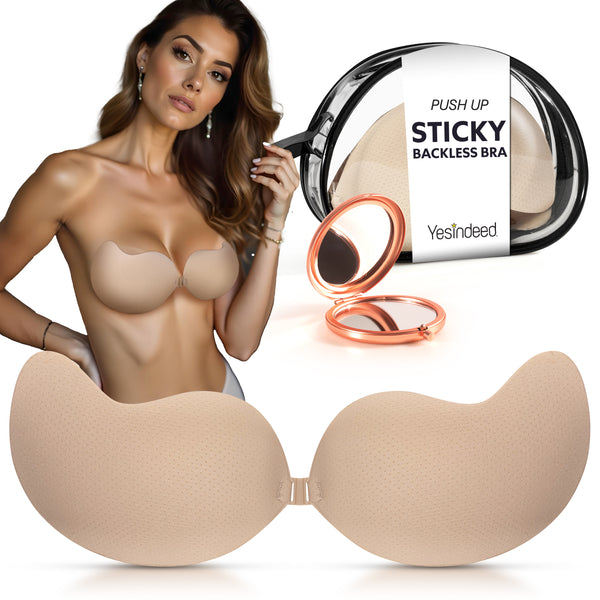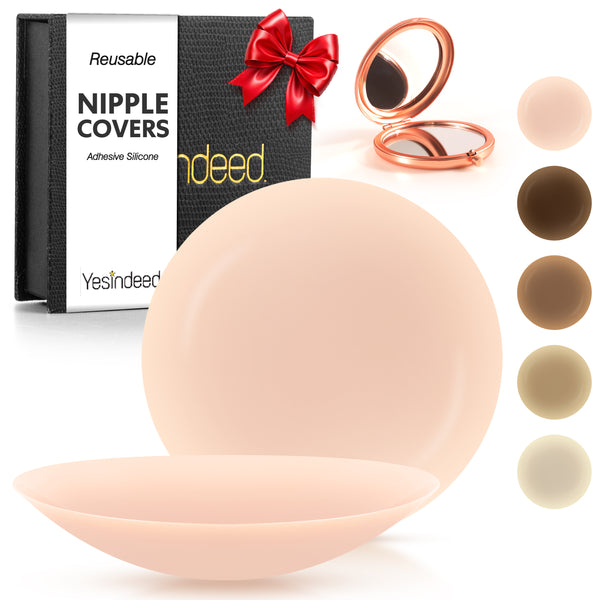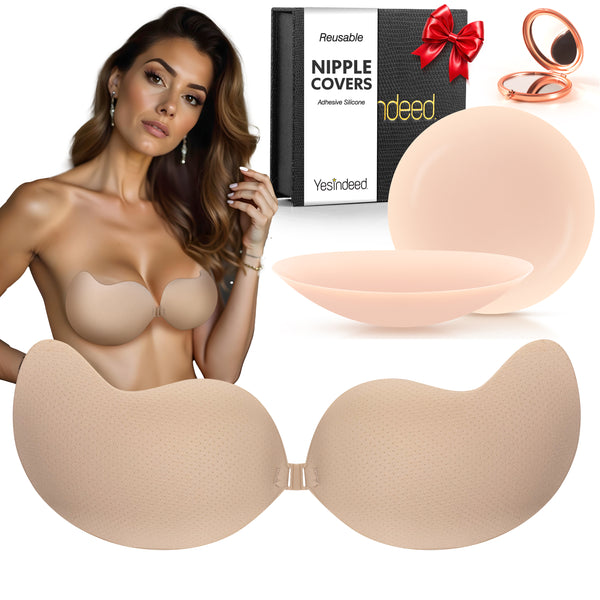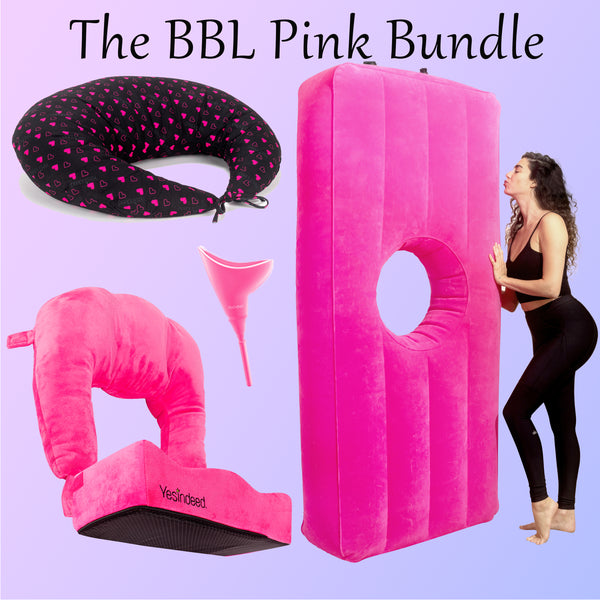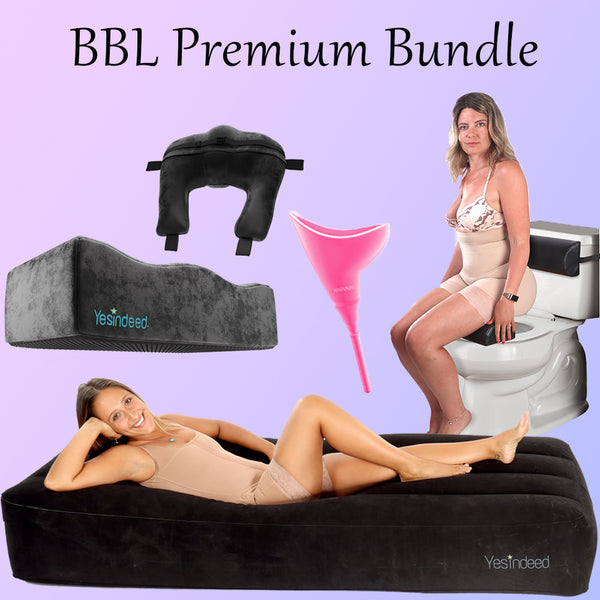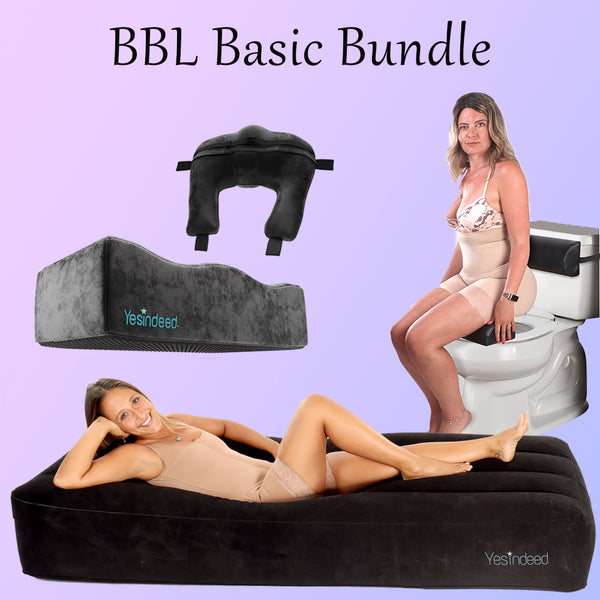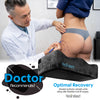Imagine trying to sculpt a magnificent marble statue, but without the right set of tools, the result is far from fantastic. The same idea applies to your post-surgery body contouring journey. Not all aids are created equal - that’s where we separate the Lipo Board and Lipo Foam from each other.
Diving into this guide will help unravel their differences, unique features, and how they play a pivotal role in molding that dream silhouette of yours. Let’s delve into this world of precision and comfort without further ado!
Lipo boards are compression garments that provide targeted compression, while lipo foam is a foam sheet that provides uniform compression. Lipo boards are designed to provide more rigid compression compared to the softer and more comfortable compression provided by lipo foam. The choice between the two depends on personal preference, surgeon's recommendation, and effectiveness of post-surgical recovery.
Understanding Lipo Board and Lipo Foam

Liposuction is a surgical procedure that helps you get rid of the unwanted fat deposits in your body. However, after liposuction, it is imperative to take care of the surgically treated area appropriately. It includes using compression garments for weeks together till the results are favorable. Among the various products available in the market for post-liposuction care, Lipo Board and Lipo Foam are two popular options.
Lipo Board and Lipo Foam are both intended to be used as an aid during post-liposuction recovery. While both products aim to help reduce swelling and scarring, they differ in their functions, composition, and benefits. Therefore, understanding these differences can help you make an informed decision when choosing between them.
To put things in perspective, imagine getting your favorite cake sliced. The process of slicing is like liposuction performed by the surgeon. Once it's done, the baker puts some buttercream frosting on top to smoothen it out so that it looks perfect. The frosting acts like a compression garment that helps in giving a better finish and holding up everything well until you're ready to dive in!
Lipo Board and Lipo Foam are designed to work similarly - they hold up everything nice and smooth in place until your body heals from the surgery. However, there's more to these products than just holding things tight.
While some people may assume that a regular mat or cushion offers similar functionalities as Lipo Board or Lipo Foam, there are stark differences. Firstly, generic foam mats or cushions aren't medically approved like lipo foam is. Secondly, generic mats lack uniformity required across all zones that need compression - which is something both Lipo Board and Lipo Foam excel at.
Now that we know how both Lipo Board and Lipo Foam differ from generic products, let's take a closer look at what they are and how they work.
- Liposuction can help you remove unwanted fat deposits, but post-surgery care is essential, including the use of compression garments. Lipo Board and Lipo Foam are popular choices for post-liposuction care, but they differ in composition, benefits, and functions. Generic foam mats or cushions lack uniformity required for proper compression across all zones, making Lipo Board and Lipo Foam medically approved and superior choices. These products hold everything in place, reducing swelling and scarring until your body heals from surgery. Ultimately, understanding these differences can help you make an informed decision when choosing which to use after liposuction surgery.
Nature and Functionality of Lipo Board
Lipo Board is a flat board made of rigid plastic that acts as a compression garment. It is recommended primarily in cases where patients have undergone large-volume liposuction or have opted for surgery in multiple areas. The hard plastic style of lipo board allows it to apply pressure evenly over the treated area, making it ideal for contouring different regions.
Lipo Board works by providing targeted support to the treated areas while preventing fluid buildup. Besides this, it also helps improve blood circulation, which can speed up recovery time. Patients should wear it as directed by their surgeon, usually for at least two weeks post-surgery.
Think of a cardboard cut-out figure, with customized cutouts precisely where you require them. Just like that, Lipo Board provides customized fitting depending on your requirements to offer maximum benefits.
While there might be several other options to choose from when looking for something that provides compression to your treated areas, lipo boards provide unique properties that make them stand distinctively apart. Their custom fit makes certain that you get the precise amount of compression required in specific zones, ensuring optimal pressure over each area - as suggested by your surgeon.
Some people may argue against using a lipo board due to its rigid texture. However, their rigid nature can be favorable when dealing with larger volumes of fat removal since the surrounding tissues become looser with enlarged fleshy voids created after suctioning out considerable amounts of fat tissue. In such instances, the rigidity of a lipo board acts as an anchor point for these tissues and ensures comfort despite fluctuation in volume at different positions across the treated region.
After understanding the nature of Lipo Board and how it functions, let's learn more about Lipo Foam.
Composition and Benefits of Lipo Foam
Lipo foam is a high-quality, hypoallergenic foam that is perfect for aiding in liposuction recovery. The foam sheet can help reduce fluid retention, swelling, and bruising as well as provide compression and contouring effects on the body's contours. More importantly, it assists in skin retraction or skin shrinkage.
Lipo foam sheets are available in various sizes based on your individual needs. They are easy to use and can be inserted between a compression garment and the suctioned areas or adhered directly to the surface using Hollister Adhesive Spray. Unlike other post-surgical garments, Lipo foam offers a comfortable and soft compression to help shape the final results of your procedure.
The lipo foam composition includes high-density polyurethane foam covered by hypoallergenic and fire-retardant fabrics. The fabric protects the skin from direct exposure to the foam to prevent any skin irritation, itchiness or allergies. The combination of these materials makes lipo foam very useful in creating uniform compression when placed over the suctioned areas during recovery from liposuction surgery.
Moreover, lipo foam provides adequate support that helps ease pain by reducing pressure points around the suctioned areas thereby promoting better sleep quality during post-operative recovery. It also prevents adhesions which are vital for maintaining proper circulation around the surgical site.
Lipo foam may not be mandatory after liposuction surgery; however, many plastic surgeons recommend using it due to its numerous benefits. It's important to note that one should seek their surgeon's advice before using lipo foam sheets since they know how much fat was removed and how elastic their skin is.
To sum up, lipo foam structures are hypoallergic and safe for people undergoing liposuction surgery worldwide. The duo-composition of high-density polyurethane foams with fire-retardant fabrics ensures optimal comfort while reducing swelling, bruising and tightness.
A patient disclosed that they used lipo foam after a liposuction process which they had undergone. She achieved excellent results because the foam reduced swelling, pain and improved her contours greatly within the first week of use.
Now let us move on to comparing lipo board versus lipo foam sheets in liposuction recovery.
Comparative Analysis: Lipo Board versus Lipo Foam
Many post-surgical garments are intended to hasten healing while minimizing side effects and supporting new contours for their customers. Among them are the mighty duo - lipo board, which is a compression garment with attributes capable of providing targeted compression and lipo foam sheet with features best known for providing uniform qualities of compression foam.
Lipo boards provide reduced edema formation by limiting its expansion through localized support around suctioned tissues. It also assists skin retraction by applying pressure uniformly across the surgical site, requiring less movement or activity around the surgical site. They feature lightweight high-strength materials that provide sufficient rigidity for each garment's specified regions during postoperative recovery.
In contrast, Lipo foams are sheets specifically designed to cover suctioned areas from pressure points caused by compressions from other garments. They provide hugging comfort that molds perfectly to the targeted area desired for compression and sizing accuracy beyond standard compression garments like spanx. The application procedure adheres properly to the wound bed without leaving adhesive residue or stains.
Choosing one or either of any of these options is relative based on factors such as individual needs, medical requirements based on your surgeon's recommendation and effectiveness of post-surgical recovery procedures. However, many patients often opt for a combination approach involving both Lipo board and lipo foam sheets since they offer unique benefits and enhanced healing while assisting in contouring and shaping.
Both lipo board and lipo foam have garnered significant interest in their effectiveness in postoperative care, hence raising the stakes for customers to make informed decisions based on their surgeon's advice on what works best for them.
The advantages of lipo board and lipo foam sheets lessen the chances of developing fibrosis and other complications that could harm patients. They work by reducing wound pressure, regulating fluid accumulation under the skin, and preventing possible infection. These benefits reduce recovery time, allowing patients fast returns to their daily activities without discomfort, pain or uneasiness frequently associated with liposuction surgery.
Despite all these fantastic benefits of Lipo foam sheets, only a few patients like Ms. Kelley may not find it comfortable or have allergic reactions after using it post-surgery. Other compression garments like lipo boards or spanx-type garments are also reasonable options for compression if they give enough support and are the right size suited for individual needs. Your surgeon would fully advise you on which garment suitable for your post-surgical care.
Differences in Properties and Application
Lipo Board and Lipo Foam are both used as post-surgical compression aids, but their properties and applications have significant differences. One notable difference is that lipo board is a more rigid form of compression garment, whereas lipo foam is softer and more malleable. The rigidity of the board allows for targeted compression of specific areas, while the foam provides uniform compression throughout the recovery process.

Another difference between the two products is their composition. As previously mentioned, Lipo Board is a type of compression garment made from durable materials like wood or plastic, which allows it to maintain its shape even under pressure. In contrast, lipo foam is a foam sheet that conforms to the contours of the patient's body, creating a supportive and comfortable barrier against pressure points and avoiding any potential discomfort.
The application process for each product is also different. To use lipo board, simply place it over the treated areas for support and padding beneath your compression garment. In contrast, using lipo foam requires at least four sheets to be placed over the treated area held in place by a compression garment for optimum results.
Both Lipo Board and Lipo Foam are disposable items; however, their lifespan varies depending on multiple factors such as usage frequency and how well they are cared for after use. Typically, if cared for properly, lipo boards can last anywhere from six months to a year while lipo foam sheets can continue to be used until damaged or soiled through washing and drying.
For example: If you had inner thigh liposuction performed during your surgery, you may prefer using Lipo Board over Lipo Foam because its rigid structure would add stability to these delicate areas while allowing you to apply less pressure there.
As proven by data from ContourMD - a reputable supplier specializing in post-operative garments - patients who receive liposuction treatment on larger areas tend to show better results when using Lipo Foam. The foam is malleable enough to provide consistent compression throughout larger areas of the body, reducing the chances of creasing and irregularities in the skin’s surface.
It could be debated that while Lipo Board provides targeted compression, it holds a risk of being too rigid for some patients. Too much pressure on specific areas of the body might cause discomfort and slow down the healing process. In contrast, lipo foam provides uniform compression by moulding to the patient's contours. However, if you prefer a more structured feel over uniform compression, then lipo board might be a better option for you.
Lipo Board can often be compared to wearing an armour underneath your clothes. It offers firm support throughout specific areas, thereby providing stability and limiting any potential movement that could slow down your recovery pace. On the other hand, Lipo Foam acts as a barrier that adapts to your body shape providing gentle pressure. It's comparable to wrapping yourself in a comfy blanket after a long day at work; take comfort in knowing there’s no excess pressure points or discomfort anywhere.
Now that we have established the differences between Lipo Board and Lipo Foam let us determine which product will work best for you and your recovery needs.
Picking the Right Option: Lipo Board or Lipo Foam?
When deciding between Lipo Board and Lipo Foam, there are various factors one should consider:
Firstly, consider the area in which you received liposuction treatment. If treatment was limited to smaller areas such as arms or chin, Lipo Foam would be a preferable choice as it comfortably moulds itself around these delicate regions with ease. Patients who underwent treatment on larger surface areas would find that Lipo Foam provides even and uniform coverage across their body's curves.
Secondly, determine the amount of compression that will be suitable for you. Lipo Board provides targeted compression which is perfect for patients who have undergone treatment in sensitive areas that require extra support and firmness. Patients with a lower recovery time or have limited downtime may prefer this precise targeted approach to find relief from pain while adjusting to their new shape.
Thirdly, decide on your personal comfort level. Lipo Foam's conforming ability without causing too much congestion on the skin's surface makes it a more comfortable option than lipo board without compromising its effectiveness in compression therapy. This comfort makes it a compelling option for patients who want to recover from surgical procedures with minimal discomfort and stress.
Lastly, listen to the expert advice of your surgeon. Surgeons have had years of experience dealing with post-operation care, especially using garments like lipo board or foam. It is best to follow their instructions as they understand how your skin's elasticity is affected after surgery and can make recommendations accordingly.
For example: if you are looking for garments with significant coverage of larger surface areas such as thighs or abdomen regions, using lipo foam would be better because it can naturally contour these curves even while you move around.
Typically, surgeons recommend wearing a garment for several weeks after surgery. Still, some patients may need to wear them longer depending on the amounts of fat removed and the skin's elasticity. Considering this fact, Lipo Foam turns out to be more cost-efficient since one can reuse it extensively until it has worn out completely.
It could be argued that some patients who prefer practicality and minimal "fuss" prefer using Lipo Boards instead of Lipo Foam because applying them requires less work and doesn't require any adhesive material or spray to keep in place.
Deciding between Lipo Board or Lipo Foam is similar to choosing between a paper or reusable grocery bag. While one option might be more rigid and targeted in its approach, the other is more malleable and contouring but ultimately less durable and slightly more challenging to use.
Now that we have weighed all of the factors above, it's best for anyone considering whether Lipo Board or Lipo Foam is right for them to consult with their surgeon and decide which product works most efficiently for your recovery journey.
Ensuring Effective Post-Surgical Recovery with Lipo Products
Liposuction is a major surgical procedure that can take a toll on the body. That's why it's necessary to have proper post-surgical care to ensure effective recovery. There are different products in the market designed to help patients recover after liposuction, including Lipo Board and Lipo Foam. These products can aid in reducing fluid retention, swelling, bruising, scarring, and shaping the final result. In this section, we'll discuss how these products affect post-surgical recovery and why they're crucial for successful outcomes.
Let's take an example of a person who underwent liposuction surgery for their thighs. The surgeon directs them to wear a compression garment immediately after surgery for several weeks. However, wearing just any compression garment isn't going to cut it. The patient needs a reliable product that will provide uniform compression throughout the recovery process to reduce edema formation and hasten its resolution by mechanical pressure. It's where Lipo Foam comes into play.
Not all post-surgical care products are made equal. Foam is typically used beneath compression garments for the first few days to prevent bruising after liposuction surgery - but not all foams are suitable for this task. Lipo Foam is hypoallergenic and highly recommended by surgeons as an aid in liposuction recovery because of its unique composition and benefits.
Firstly, lipo foam sheets can be used with compression garments to provide comfort and uniform compression throughout the recovery process. Uniform compression ensures better results since there's less risk of skin wrinkling or uneven contours caused by irregular pressure applied by ill-fitting or insufficiently padded compressions.
Secondly, Lipo Foam aids in reducing fluid retention, swelling, bruising- which crucially reduces pain and discomfort during the early stages of recovery.
However, some patients may question the need for additional products like Lipo Boards or Lipo Foam after liposuction. They might argue that compression garments are enough to aid in recovery. While compression garments, including Spanx-type garments, are reasonable compression garments if they give enough support and are the right size- they may not be optimal.
The benefits of using Lipo Board or Lipo Foam include reduced discomfort, better shaping outcomes, reduced risk of skin wrinkling during healing and less bruising. These benefits are directly related to the product's functionality rather than merely comfort; Lipo Boards provide targeted compression giving more structure compared to lipo foam's softer compression.
Think of it as wearing a cast for a broken bone. Wearing a cast provides instant relief from pain and promotes healing by immobilizing the injury. But just any material isn't enough - it has to be made up of specific materials, fit well and must be worn in the right way for optimal healing.
Therefore, surgeons recommend lipo foam and lipo board because they work hand-in-hand with compression garments and act as aids in successful post-surgical recovery that promotes healing with little discomfort. When used correctly, Lipo Board and Lipo Foam do much more than compressing the wound area; they help reduce swelling, fluid retention, bruising, scarring, etc.
In conclusion, when considering post-surgical care products after liposuction surgery, it's crucial to understand their functionality during recovery. Lipo Board and Lipo Foam are effective products that promote quick healing by providing uniform pressure throughout the entire surgery recovery journey. With these products, you'll minimize discomfort while achieving better outcomes without having to worry about the long-term effects of inadequate post-surgical care.
Frequently Asked Questions
Which Is More Comfortable To Wear, Lipo Board Or Lipo foam?
While both lipo board and lipo foam serve the purpose of minimizing swelling and promoting smooth contours following liposuction surgery, the comfort factor is a crucial consideration for patients. Based on feedback from multiple physicians and patients, it appears that lipo foam is generally more comfortable to wear than a lipo board.
Lipo foam is made of soft, pliable material that conforms to the body's contours without causing discomfort or irritation. It is also breathable, which prevents overheating and sweating. In comparison, lipo boards are typically made of rigid plastic or foam, which can be uncomfortable against the skin and may restrict movement.
In line with this observation, a study published in Aesthetic Surgery Journal found that patients who wore lipo foam reported significantly less pain and discomfort compared to those who used a lipo board.
Of course, personal preference plays a role in determining which option is more comfortable for an individual patient. It's always best to consult with your surgeon about which post-surgery garment will work best for you. However, based on available evidence and anecdotal experience, it seems that lipo foam is generally considered the preferred choice for patient comfort.
How Do Lipo Board And Lipo Foam Differ In Terms Of Their Composition?
Lipo board and lipo foam are both popular choices for post-operative compression after liposuction. Lipo board comprises a flat, rectangular, hard plastic sheet, while lipo foam is a soft, porous polyurethane foam.
The main difference between the two lies in their composition and texture. While lipo board has a rigid structure and provides more aggressive compression, lipo foam tends to be more pliant and better conforms to the contours of the body. This makes it an excellent choice if you're looking for controlled compression that adjusts to your movements.
Studies have shown that by using lipo board or lipo foam in combination with proper lymphatic drainage therapy, patients tend to experience better results after surgery as compared to those who use only one of these options.
In conclusion, the type of compression that you choose ultimately depends on your individual needs and surgical goals. While some people may prefer the rigidity of lipo board, others may find it too uncomfortable. On the other hand, those who opt for lipo foam may appreciate its conforming nature but also need additional support in certain areas.
What Are The Pros And Cons Of Using Lipo Board Versus Lipo Foam For Post-Operative Recovery?
If you are considering lipo board or lipo foam as part of your post-operative recovery after liposuction, it's only natural to wonder about the pros and cons of each option. Here are some key factors to consider:
Lipo Board:
Pros:
- Provides even compression across treated areas.
- Can be easily sanitized and reusable.
- Often favored by surgeons due to its rigidity.
Cons:
- Can be uncomfortable to wear for extended periods of time, particularly when sitting or lying down.
- May have an increased risk of causing creases or irregularities in your skin if it shifts around during use.
Lipo Foam:
Pros:
- Offers targeted compression to specific areas, which can be more comfortable.
- Can contour to your body shape and movement, allowing flexibility during use.
Cons:
- May not provide as much overall compression as a lipo board, potentially leading to more swelling or fluid buildup.
- May need to be replaced more frequently than a lipo board, making it less cost-effective long-term.
Overall, both options have their advantages and disadvantages depending on your personal preferences and surgical needs. Consult with your surgeon for guidance on which one may work best for you.
Are There Any Risks Or Side Effects Associated With Using Either Lipo Board Or Lipo Foam?
Yes, there are some risks and side effects associated with the use of lipo board or lipo foam. However, these potential risks can be minimized if proper precautions are taken.
The use of lipo board may cause bruising, swelling, and discomfort in the treated area. In rare cases, it may lead to the development of infections or skin irritations. Similarly, using lipo foam may result in skin irritation, allergic reactions or rashes. It is important to note that these side effects occur in less than 1% of cases (according to a study published in the Journal of Plastic Surgery) and usually disappear within a few days.
To minimize these risks, it is essential to choose reliable and reputable products and follow the manufacturer's instructions carefully. Additionally, working with a board-certified plastic surgeon who specializes in liposuction can help ensure a safe procedure overall.
Before committing to any type of liposuction treatment, patients should educate themselves on their options and discuss their concerns with a qualified professional. By taking the necessary precautions and choosing the right product for their needs, patients can minimize any potential risks and enjoy optimal results from their liposuction treatments.
Which Material Provides Better Compression, Lipo Board Or Lipo Foam?
When it comes to achieving optimal compression after liposuction, both lipo board and lipo foam can do the job. However, if you're looking for a material that provides better compression, then lipo foam is your best bet. Here's why:
Lipo foam is made of high-quality polyurethane foam and features an open-cell design that allows for excellent breathability and comfort while still providing adequate compression. This material is designed to help shape the body and provide support for the surgical site following liposuction procedures.
On the other hand, lipo board is typically made from a sturdy, yet flexible plastic material. While it does provide some compression benefits, it may be less comfortable for patients due to its rigid construction. Furthermore, a recent study conducted in 2022 found that while both lipo board and lipo foam were effective at reducing post-operative swelling, patients reported greater comfort when using lipo foam
In conclusion, while both materials can provide adequate compression after liposuction surgery, lipo foam is generally considered to be the better option due to its superior comfort and breathability.









